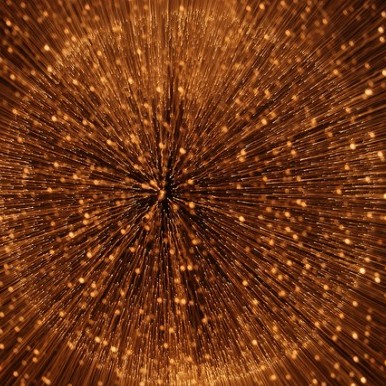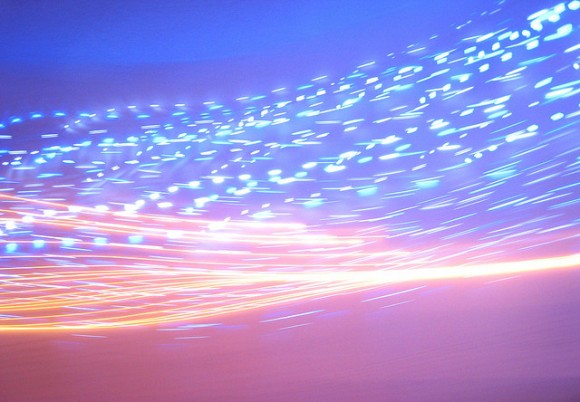
Lucid dreaming research is growing up. At least, that is Allan Hobson’s take on the recent burst of scientific studies published on conscious dreaming. Once a myth of Carlos Castaneda, and then a topic guaranteed to instantly transport researchers to the margins of academia, lucid dreaming has become a hot topic for neuroscience and cognitive psychology because it promises to isolate one of the hardest-to-pin-down objects of all time: consciousness itself.
In the 2009 article “The neurobiology of consciousness: lucid dreaming wakes up,” Hobson reviews the last twenty years of lucid dreaming research as moving from tenuous self-reports to empirical observation via brain activity. The result is not only viable research, but fresh inspiration for a new science of consciousness. This post reviews Hobson’s take on this exciting trend.
Paradox of lucidity
Let’s look back. Stephen LaBerge’s early work at Stanford (1981) empirically demonstrated that it is possible to be self-aware in the REM sleep state (and let’s not forget Keith Hearne, who was the first to signal lucid dreaming in a sleep lab in 1978, or Robert Oglivie and company, who also demonstrated lucid dreaming in REM that same year).
Many doubted this finding because the conceptual problem is so hard to wrap your head around…. how can one be asleep and aware simultaneously? Slowly, the scientific community, emboldened by the growing interest in a new science of consciousness, accepted that being awake and aware are two different concepts.
40Hz empowerment and consciousness
Now, a new generation of brain technology supports LaBerge’s original claim that lucid dreaming is not a new-age fantasy or a “micro-awakening” from sleep. EEG sampling is more sensitive than ever. In 2009, Ursula Voss and company from the University of Frankfurt found a unique brain signature: a 40Hz spike in brain activity in the frontal lobe during lucid dreams. Read my riff about this study here.
What makes this 40Hz finding so intriguing, argues Hobson, is it has previously been correlated with waking consciousness—as well as meditation and hypnosis, I should add. Waking consciousness is not just one state, either, remember, but continuously shifts around between linguistic thinking, emotional day dreaming, focused attention and problem-solving, and creative flow states that are quite dreamy in their own right. This connection of lucid dreaming to meditation has been noticed before (most notably by Harry Hunt and later Allan W. Wallace), who have further drawn parallels between lucid dreaming and the states of consciousness sought after in Eastern mystical traditions.
In between worlds

We’re zeroing in on something that philosophers and scientists have been looking for since Descartes saw his first pineal gland: the seat of the conscious mind. Recent brain imagery experiments on lucid dreaming performed by German researcher Michael Czisch found more evidence for unique activation patterns during lucid dreaming that exceeds “normal” dreams, not only in the frontal lobe but also parietal and temporal structures. Voss’s team noticed this too.
What does this mean? There’s some strong synchronous firings going on during lucid dreaming that researchers don’t quite understand yet, but we can say for sure that lucid dreaming is a globally activated state that parallels other classically defined states of waking consciousness in terms of its complexity and coherence. It appears that lucid dreaming is a bridge between the imagination of the dream state and the insight of our most prized conscious states. We are literally in between two worlds. In fact, Hobson is now leading the charge that lucid dreaming deserves to be called its own state of consciousness, separate from ordinary REM dreams.
For Hobson, the implications are not only philosophical but also address psychiatry’s founding aim to heal and ease the suffering of mental illness. For example, because lucid dreaming is a learnable skill, the ability to self-monitor 40hz power could open the doors to learning how self-awareness can mediate behavior, identity and those other classic markers not only for sanity but for creativity and high-functioning genius.
This is the first essay of several more than will explore the new neuroscience of lucid dreaming.
Intro image: Light sphere by piji
References
Hearne, K. (1978). Lucid dreams: electrophysiological and psychological study. Doctoral dissertation: Liverpool University.
Hobson, A. (2009). The Neurobiology of Consciousness – Lucid Dreaming Wakes Up. International Journal of Dream Research, 2(2), 41-44. Retrieved from http://archiv.ub.uni-heidelberg.de/ojs/index.php/IJoDR/article/viewFile/403/pdf_1
LaBerge, S., Nagel, L., Dement, W., Zarcone, V., (1981). Lucid dreaming verified by volitional communication during REM sleep. Psychophysiology, 20: 454-455.
Olgivie, R, Hunt, H., Tyson, P., Lucescu, M., Jeankins, D. (1978). Searching for lucid dreams. Sleep Research, 7: 165.
Voss, U., Holzmann, R., Tuin, I., & Hobson, J. A. (2009). Lucid Dreaming: A State of Consciousness with Features of Both Waking and Non-Lucid Dreaming. Sleep (Rochester), 32(9), 1191-1200. Associated Professional Sleep Societies, LLC. Retrieved from http://www.pubmedcentral.nih.gov/articlerender.fcgi?artid=2737577&tool=pmcentrez&rendertype=abstract
Hi Ryan! Nice article 🙂 I am especially interested in LaBerge’s reaction to Hobson’s 2009 article & research, since the claim that lucid dreaming could well be a separate state of consciousness might prevent lucid dream research to be more generalizable to the (much vaster and active) domain of dream science. The claim conceptually isolates lucid dreaming from ongoing dream science, in the sense that conclusions made in lucid dream research are not evidently applicable to ordinary (non-lucid) dreams (e.g. psychophysiological correlates of breathing are shown to be present in lucid dreams: also in ordinary dreams?). If lucid dreaming would NOT be a fundamentally different state (as LaBerge argues for), then lucidity would be a great vehicle to experimentally explore the psychophysiology of dreaming, and would be a much more acknowledged and useful. So in one way (personally) I would have loved to discover that lucid dreaming would show epistemological similarities with non-lucid dreams… as that would open up big opportunity for (lucid) dream research.
Ryan
Thanks for this. I need to be able to articulate the similarities between meditative states – particularly guided imagery – and lucid dreaming to help make a case for dreamwork as an integrative medicine practice. I’ll look forward to other articles.
Perhaps LaBerge will comment on this recent findings in his upcoming Stanford lecture series. His coauthored article with Tracey Kahan in Consciousness and Cognition (due out this spring) will continue to argue for a spectrum of lucidity across dreaming. Other dream researchers have responded to Hobson, i’ll present their views soon. Hobson and crew have not yet discussed the flexibility of lucid dreams (how they co-mingle with non-lucid dreams). And as Kahan and LaBerge have argued before, ordinary dreams are much more “lucid” than we give them credit for. So the debate is still crudely defined, it seems, as for the separation of lucid dreaming from the ordinary dream state. As Ken Wilber might say “is it a state or trait?”
I was so dissapointed when this article ended! And happy to see it is the first in a series.
I’m curious about the mental health aspect of this work. Have you written about it elsewhere, or will you be writing more about the subject?
Very much enjoyed this article but thought a couple of things needed to be mentioned. First that one of the main hurdles to getting real research done in this important study of consciousness and reality is the new age movement. The near total charlatanry that surrounds new age types makes most of the really bright people this area of research could use see it as wingnuttery. Secondly I’m not sure what all the fuss is exactly about developing this. I easily developed lucid dreaming as a teenager in the1980’s using the techniques that Carlos Castaneda recommends that is first I programmed myself before sleep to remember to look at my left hand. Once I could do that I started remembering to look at my right hand and then just gradually increased the complexity of my nights homework until I had it. I may have had a natural talent for it though since as a child I had complete control over my dreams that is I could deliberately will a setting (most often candyland but sometimes others) and do anything I wanted to like fly, change forms, have adventures and the like. As a teen my research progessed until I had fully lucid dreaming but I ceased when I realized the implications concerning the nature of waking reality were too unsettling.
Why would you take waking reality too unsettling ? Should that not be a reason to actually continue your dream studies of your own conscience ? Like you I started with Carlos concepts with a “nak” for being able to do it anyway. At 46 years old I do unbelievable things in my dreams including the inorganic beings but whether or not they are real I don’t know. My point is you should continue exploring your own mind through dreaming techniques. Keep own dreaming brother.
LaBerge, S., Nagel, L., Dement, W., Zarcone, V., (1981). Lucid dreaming verified by volitional communication during REM sleep. Psychophysiology, 20: 454-455.
not a legit reference ……
http://psycnet.apa.org/psycinfo/1982-07147-001